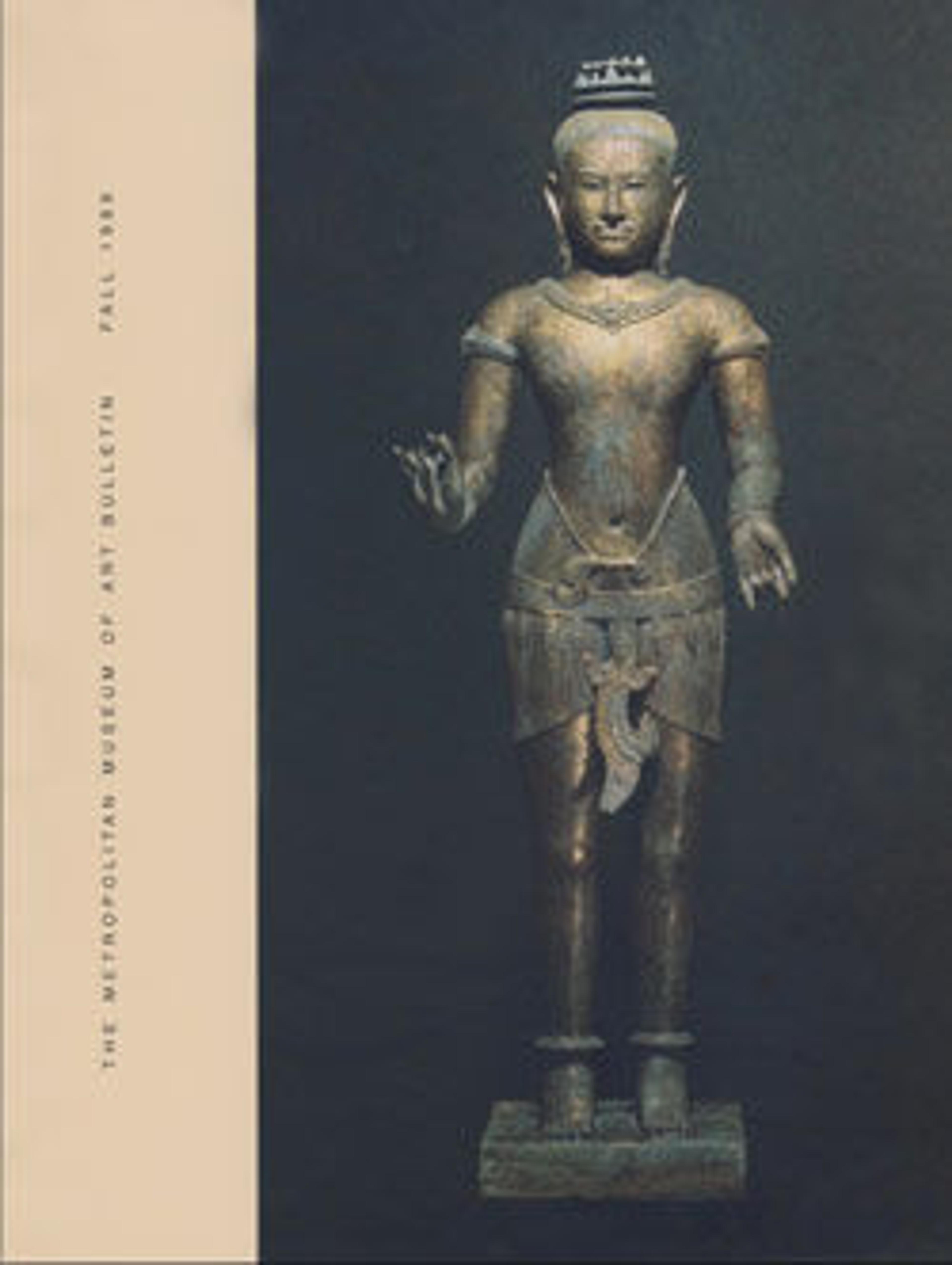Hat
This hat belonged to the Kennett family of Sellindge, Kent, England. Considered to date from the late seventeenth to the early eighteenth century, it is related to three other hats worked in this shape and unusual technique at Colonial Williamsburg, Virginia, and Hatfield House and Hereford Museum, England. The pattern is reminiscent of early needle lace or cutwork, and around the brim is evidence of tiny silk stitches, suggesting that the hat originally had a silk lining, as does the one at Hatfield.
This group of hats has generally been associated with the Italian straw-hat industry, and as early as 1590 Cesare Vecellio in Habiti Antichi et Moderni illustrates a huge, crownless straw brim, on which a fashionable Venetian lady might spread out her hair to bleach it in the sun, while shading her face. In England, in 1667, Samuel Pepys records a visit to Hatfield, where the ladies "had pleasure in putting on some straw hats," and in 1722 the Post Boy newspaper reported" a fine straw hat presented to the Princess," with which she was so pleased that she ordered twelve more. Where illustrated, however, these hats seem quite unlike the shape and openwork style of this example.
The three openwork hats are made of a form of split palm, perhaps closest to that in Italian basketry work, and it particularly resembles the technique used in a tiny baby-cap basket at Holyrood House, Scotland, believed to have belonged
to King James II and Mary of Modena, who lived there from 1679 to 1682.
This group of hats has generally been associated with the Italian straw-hat industry, and as early as 1590 Cesare Vecellio in Habiti Antichi et Moderni illustrates a huge, crownless straw brim, on which a fashionable Venetian lady might spread out her hair to bleach it in the sun, while shading her face. In England, in 1667, Samuel Pepys records a visit to Hatfield, where the ladies "had pleasure in putting on some straw hats," and in 1722 the Post Boy newspaper reported" a fine straw hat presented to the Princess," with which she was so pleased that she ordered twelve more. Where illustrated, however, these hats seem quite unlike the shape and openwork style of this example.
The three openwork hats are made of a form of split palm, perhaps closest to that in Italian basketry work, and it particularly resembles the technique used in a tiny baby-cap basket at Holyrood House, Scotland, believed to have belonged
to King James II and Mary of Modena, who lived there from 1679 to 1682.
Artwork Details
- Title:Hat
- Date:17th century
- Culture:British
- Medium:(a) grass or rush
(b, c) lacquered bamboo - Credit Line:Purchase, Council of Fashion Designers of America, 1988
- Object Number:1988.342.1a–c
- Curatorial Department: The Costume Institute
More Artwork
Research Resources
The Met provides unparalleled resources for research and welcomes an international community of students and scholars. The Met's Open Access API is where creators and researchers can connect to the The Met collection. Open Access data and public domain images are available for unrestricted commercial and noncommercial use without permission or fee.
To request images under copyright and other restrictions, please use this Image Request form.
Feedback
We continue to research and examine historical and cultural context for objects in The Met collection. If you have comments or questions about this object record, please contact us using the form below. The Museum looks forward to receiving your comments.
